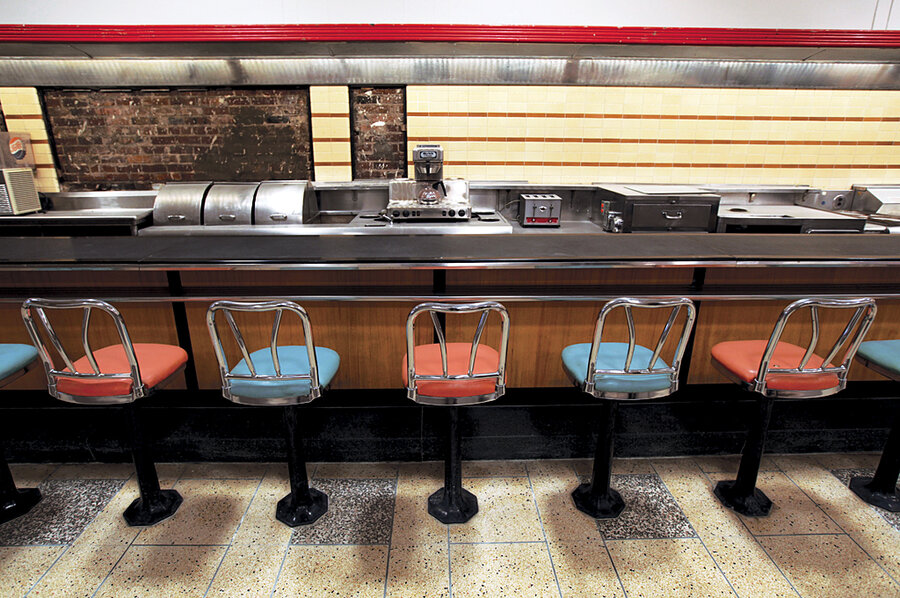A seat at history's counter in Greensboro, N.C.
Loading...
| Greensboro, N.C.
• A local, slice-of-life story from a Monitor correspondent.
It all started here at the Woolworth lunch counter. But this cradle of student protests against desegregation in Greensboro, N.C., was not always given the same stature as the civil rights movement landmarks of Memphis, Tenn., and Selma and Montgomery, Ala., when historians described the sea change that shaped the new South.
But 50 years after the Feb. 1, 1960, sit-in, the site was rechristened in 2010 as the International Civil Rights Center & Museum, securing a place in history for the African-American college students, “the Greensboro Four,” who refused to cede their seats at the whites-only counter.
“I’m proud of the museum,” says Greensboro resident Ian Pawlowski, a 30-something who grew up when the city was still reeling from deadly Ku Klux Klan shootings. His family fought on both sides of the Civil War, but Mr. Pawlowski says that today the city is demographically and culturally mixed.
Get daily or weekly updates from CSMonitor.com delivered to your inbox. Sign up today.







